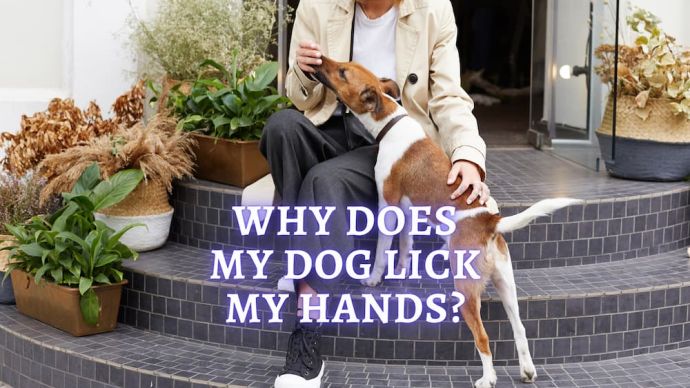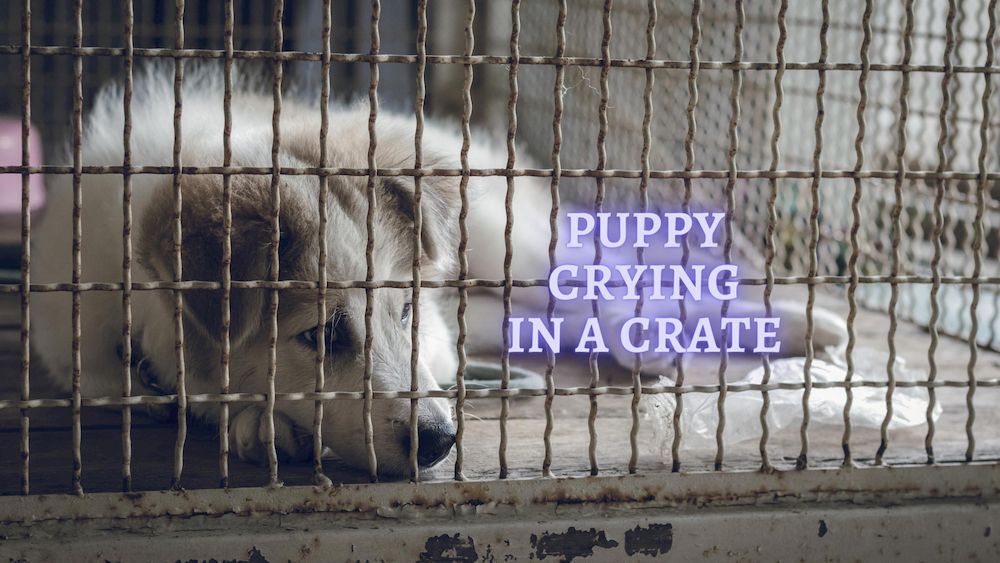Puppy Crying in a Crate: What to do when Puppy cries in Crate?
Written by:
Author: Kristina Tyler
Kristina is a full-time freelance writer who specializes in pet care topics. With her life-long love of animals and passion for learning, she thoroughly enjoys researching and writing about how to care for pets.
View all 7 articlesLearn about our editorial process and veterinary review board.
Viewed: 297
Updated on: 02/09/2021
Crate training is an essential step in a young pup’s training, especially if their owner cannot keep an eye on them every minute of every day. An adventurous young puppy will likely want to climb every piece of furniture, chew every rug, and urinate on every table leg. Therefore, a puppy crate is needed to ensure that they behave and don’t put themselves in any danger. Сrate can be used as a bed at night, or as a temporary housing unit while you are away from the house.
However, one of the most common problems with a puppy crate comes in getting your dog used to the new surroundings. It is common for a puppy to cry or whine when being put into the crate or walk out of view.
Reasons why do Puppies cry while in their Crates
There are several reasons why puppy cries while in their training crate and you need to know them and understand how to react.
1. Dog is lonely
If used to being by your side whenever you are home, but get locked away at night time or when you leave for work, they are likely crying because they miss spending time with you. In most cases, these puppies will grow used to the routine and eventually settle down, although they may occasionally bark or cry if they hear you moving around the house while they are still locked away in the crate. Many puppies are also known to bark or cry during the day when they are bored. The most common reaction to boredom in a young dog is a series of steady barks.
2. Dog scare of the crate and do not like confined spaces
While puppies almost always want to be let out of the crate, it is also important to know when that reality becomes necessary.
3. Dog want to go to a toilet
While puppies almost always want to be let out of the crate, it is also important to know when that reality becomes necessary. If your puppy usually is relatively quiet while in the crate but begins to cry or bark, it is likely that they need to be let out for a toilet break. All of the previously mentioned reasons are perfectly normal when it comes to crate training your puppy.
How to stop a Puppy from crying in a Crate at night?
When dealing with young puppies, crate training can generally take a few weeks. The younger the dog is, the weaker their bladder, meaning they can only remain in the crate for a few hours before needing a toilet break. Young puppies are also instinctively programmed to cry when left alone. You should expect a puppy to cry through the night in a crate during the first few periods of sleep and it is important to set yourself some realistic expectations with regards to their training. It is unlikely that any puppy will enjoy being in the crate on their own to start with, so prepare yourself for some crying. While the old advice was always to leave the puppy to it and let them cry it all out, that is a very out-dated training exercise these days.
Whatever you do, you should never punish your dog for whining or crying while in their crate. The puppy may already be anxious at the new surroundings and being shouted at will only exasperate the matter. If your dog is bored, scolding them will only give them the attention they are craving, thus prompting them to whine, cry, and bark more often.
READ MORE: Indoor Activities fro Dogs
Luckily, there are a number of ways to prevent your puppy from crying while in their crate:
Treats
Leave treats in the crate as a reward for good behavior. Treats that take a while for the puppy to fully consume are best for this.
Dinner
Give your puppy their dinner while in the crate to promote it as a safe and positive space. They will begin to associate the crate with food.
Toys
Giving your puppy something to play with while in the crate is a great way to keep them entertained and satisfied. If you have anything that smells like you to put in there too, that can help with the loneliness.
READ MORE: The Best Interactive Dog Toys
Comfort
Make the crate as comfy as possible so that it seems more like a bedroom than a prison for your puppy.
Size
Make sure that the crate was designed to fit your breed and age of puppy. They should have enough room to turn around, stand up, wag their tail, and be generally comfortable.
Location
If you can, place the crate in a common space within your home. Most puppies cry because they are lonely, which can be solved by placing the crate near you. At night, perhaps put it at the end of your bed.
Exercise
Give your puppy some exercise before locking away in the crate. If your puppy is full of energy when you put them in the crate, they will find it hard to settle down. Contrastingly, a tired puppy will likely curl up and sleep in the crate without an issue.
Toilet
Teach your puppy that whining and crying earn them a trip outside the crate, but only for a toilet break. Let them outside to relieve themselves, then put them back in the crate again. This teaches your puppy what to do when they need the toilet, while also ensuring that they do not abuse that power just to be let out.
READ MORE: How to Teach a Dog to Come
READ MORE: Why does my Dog Chase their Tail?
How long will a Puppy cry at a Crate?
Crate training in general usually takes a few weeks for a young puppy, however, this can vary from dog to dog. Just like humans, every puppy is different and has its own personality. Some may take to the crate like a duck to water, some may hate it at first before warming to the idea, and others may struggle with separation anxiety. When it comes to crying in the crate, consistent whining usually lasts a few nights before the puppy becomes used to the schedule. As long as you follow the above advice regarding training them and making them feel comfortable in the crate, they should soon understand the routine. Persistent crying may require extra management and training.
Should I let my Puppy cry?
Leaving your puppy to cry all day or all night is a big no. Persistent crying usually means that your dog is trying to tell you something. They may need to be let out for a toilet break, be sick, or be struggling with loneliness. Just follow the rules we set out above. Let them out, but only for a toilet break, then lock them back in the crate. They should know that they can get out of the crate when they need to, but only for the necessity of relieving themselves. More serious problems that you should look out for include separation anxiety, which may require long-term training or medication. One key sign of this anxiety is when a puppy begins to dig, bite, or break the training crate.
 Dog Training Why Does My Dog Lick My Hands? Positive and Negative Signs Why Your Dog Licks Your Hands
Dog Training Why Does My Dog Lick My Hands? Positive and Negative Signs Why Your Dog Licks Your Hands - 128
- 0
 Dog Training Why Does My Dog Scratch The Carpet? 16 Reasons Why Your Dog Trying To Dig In The Carpet
Dog Training Why Does My Dog Scratch The Carpet? 16 Reasons Why Your Dog Trying To Dig In The Carpet - 185
- 0
 Dog Veterinary Tips Why is my Dog throwing up: Causes and Preventing (Veterinary Advice)
Dog Veterinary Tips Why is my Dog throwing up: Causes and Preventing (Veterinary Advice) - 21800
- 5
 Dog Care My Dog Keeps Scratching His Mouth: Reasons Why Your Dog Scratching Face
Dog Care My Dog Keeps Scratching His Mouth: Reasons Why Your Dog Scratching Face - 17170
- 1
 Dog Care Why Is My Dog Bleeding From Its Butt? Causes and treatment of rectal bleeding in the dog
Dog Care Why Is My Dog Bleeding From Its Butt? Causes and treatment of rectal bleeding in the dog - 15120
- 0
























